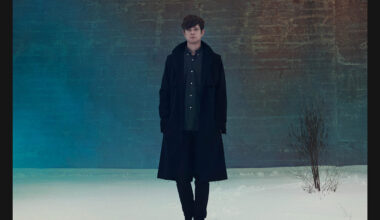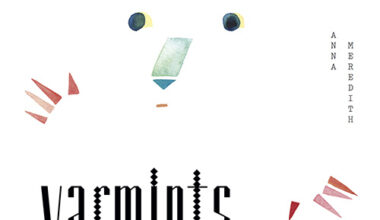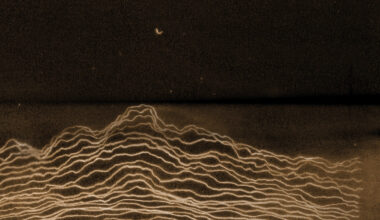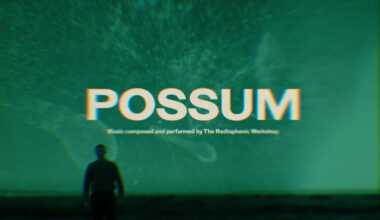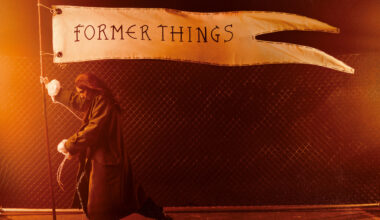Trans-Euro Impress

‘Close To The Noise Floor’, 2016’s exhaustive trawl through Britain’s post-punk DIY electronic underground, was a runaway hit. Now compiler Richard Anderson, aided by long-time expert/champion Dave Henderson, cast their fevered forensic gaze to parallel goings-on in Europe, emerging with a frequently astonishing parade of epic early electro, synthpop, industrial and avant-noise.
Over 62 tracks occupying four CDs encased in handsome hardback book (often annotated by the artists), this miraculous set opens the door into that brave new world of anarchic exploration that, as heard here, was often scorching primitive blueprints for today’s music.
After Germany’s Die Gesunden unleash their whirring, glistening theme ‘Die Gesunden Kommen’ and Belgium’s Alain Neffe has laced Pseudo Code’s ‘She’s Got Blue Eyes Wow’ with Damo-like mutterings, it’s already apparent that the music here is coated in darker, more serious hues than the first set, brandishing a punk-like attack over frivolity or innovations born from rich backgrounds that stretch back to Stockhausen concerts.
The menu is relentlessly unpredictable, only including the likes of Front 242, Klaus Schulze, DAF, Cluster, Yello, The Neon Judgement, Minny Pops, Vox Populi!, Der Plan and Vangelis in strict context. Rather than familiar Can tracks, there’s Holger Czukay teaming up with Conny Plank in 1980 for Le Vampyrettes’ gloriously spooked horror rumble ‘Biomutanten’. Other names that deserve memory-jogging inclusion include Berlin’s Malaria, fronted by Gudrun Gut and Bettina Köster from the Neue Deutsche Welle scene, howling the ominous clank-vamp of ‘Geld’.
While much of the UK’s electronic scientists (aside from mainstream posers like Eurythmics and Howard Jones) hatched their sounds in bedrooms for limited release, Europe’s explorers created theirs to be performed in galleries or performance spaces. For example, the pulsing riff and drone of Schaltkreiss Wasserman’s ‘Lux’ was created by Basel Art Academy students for a 1982 movie.
Many of these tracks were self-released on limited cassettes or tiny independent labels. Most rewarding is that many of these obscure curios would otherwise remain lost in time unless included here. The peaks of this endlessly rewarding iceberg include (deep breath) the rampant drum machine and radio fragments that splatter ‘Ukaasi’ by Finland’s Gagarin-Kombinaatti (which has languished unreleased for over 30 years); Christina Kubisch messing around with a kids’ voice computer and Casio on ‘Speak & Spell’; France’s Ruth (aka Thierry Müller) turning an instrumental demo of ‘Polaroid/Roman/Photo’ into a startling exercise in glacial French synthpop; the stunningly morphing mathematical shudder of Austria’s Monoton; Italy’s bonkers Tasaday cross-panning a radioactive forest on ‘Il Castello’; Gunner Møller Pederson (Copenhagen’s leading electronic instigator after the mid-60s) unleashing wobbleboard-wielding electronic birds over sombre chords on an extract from ‘Stoned – An Electronic Symphony’; French lighting designer turned musician Bernard Szajner with 1979’s eerie ‘Shaï Hulud’ from his Frank Herbert-inspired ‘Visions Of Dune’ album; veteran Austrian composer Gerhard Narholz, who recorded under pseudonyms since the 1950s and calls himself Walt Rockman for the astonishing sub-aquatic ‘Plancton’ from one of the electronic sound library albums he recorded between 1975-1986, and Italy’s Maurizio Bianchi, who irresistibly describes the bristling concrete static of ‘Industrial Tape Track 3 Extract’ as “a blast sound for surgical furnaces”.
Several tracks carry harsh post-punk edges, like the chanting females over pulsing drum machine of Universalanschluss’ ‘Krematorien’, Spain’s TG/Suicide-recalling Esplendor Geometrico setting tabloid sexual atrocity reports to stark noise and The Netherlands’ Das Ding (Danny Bosten) erecting a monolithic throb on ‘Raid (Demo)’. The No Wave interface comes from Dutch electronic pioneer Truus de Groot, who shows up on Plus Instruments’ 1979 death rattle indie-romp ‘More Fun With Korg’ and under her own steam on 1982’s ‘NY NY’, which catches her cooing “New York New York” over low-fi Suicide pulses in the New Jersey room she shared with Lydia Lunch drummer Jim Sclavunos.
Countries not previously known for electronic milestones provide yet more fascinating moments. Greece’s Not Only Bones also evoke Suicide with quivering reverbed vocals, primal drum machine clatter and racing car drones, Yugoslavian underground mainstay Mario Marzidovšek unleashes blackening industrial globules over creaking pulses, Romania’s Octavian Nemescu creates orchestral ambience to accompany an exterior fresco on the walls of a monastery, Portugal’s Anar Band provide the set’s furthest-out moments with the avant-space freeform detritus of 1977’s ‘Tarzan’ and Lapland’s Aavikon Kone ja Moottori shouts over loops, fuelled by the loneliness of feeling like his country’s only electronic agitator.
There have been many electronic compilations but, for relentless jaw-dropping revelations and inestimable historic value, nothing approaching the scope and quality of this cathartic roller coaster; not even its own predecessor.
